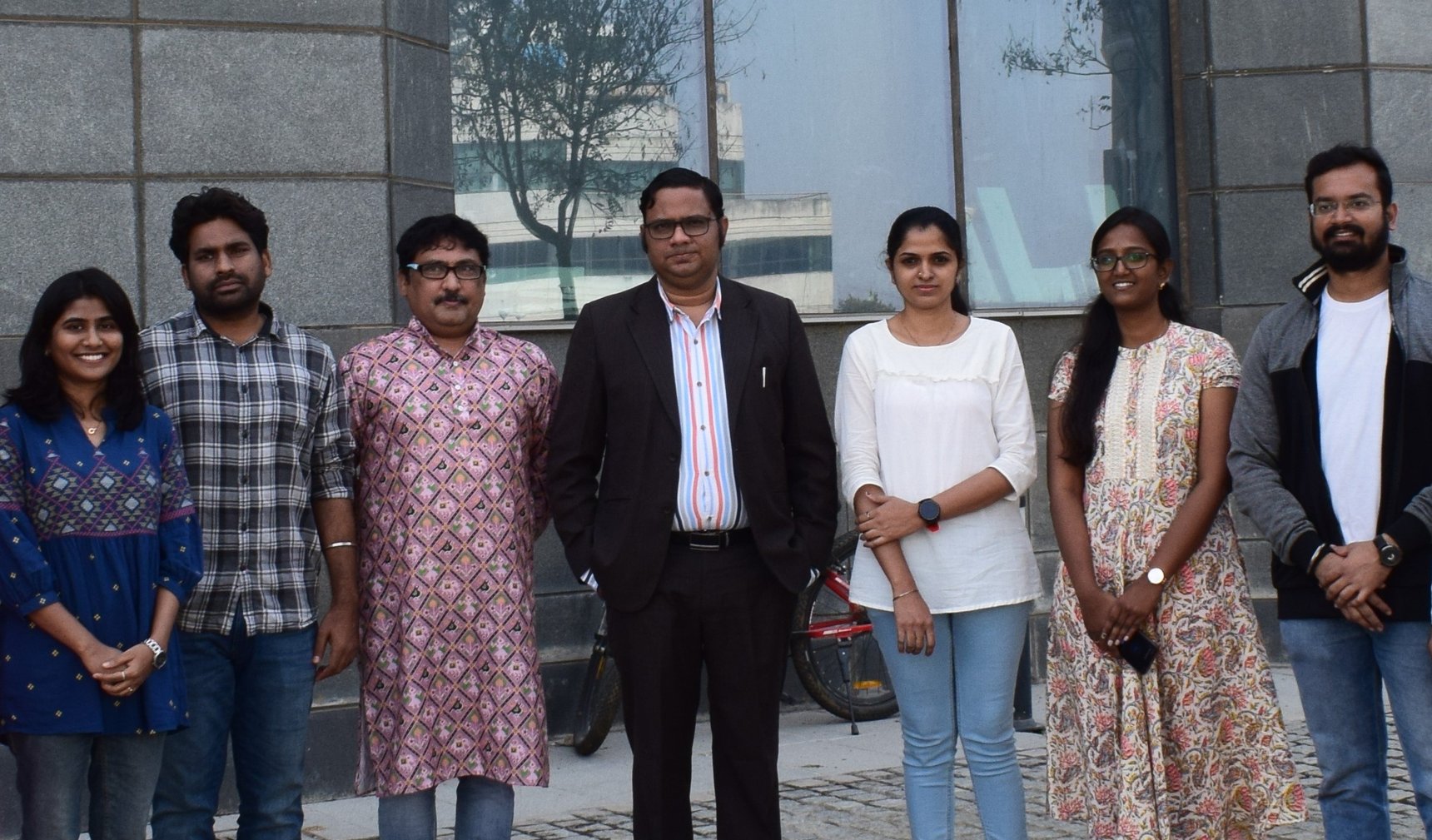
In Conversation with Dr. Chandra Shekhar Sharma
What does it take to become a professor at an IIT before even defending your PhD? In this captivating conversation, Prof. Chandra Shekhar Sharma from IIT Hyderabad shares his unconventional academic journey, the evolving landscape of Indian higher education, and the pivotal role of young scientists in shaping research and policy. From navigating academia without a postdoc to leading global scientific communities, his insights challenge traditional career trajectories. He also unpacks how IIT Hyderabad’s innovative curriculum is redefining interdisciplinary education and fostering entrepreneurship.
SS: Good afternoon sir. I am Swarnendu Saha from team InScight and it is nice to have you here. I plan to discuss some of your scientific background, your scientific journey and your journey with the INYAS. So to start with, where do you come from and how did you reach here? Where you are today?
CSS: Hi. I am Chandra Shekhar Sharma, currently Professor in Chemical Engineering at IIT Hyderabad and I did my B. Tech from Aligarh Muslim University (AMU) in Chemical Engineering itself. In fact, I did my doctoral studies directly after the B. Tech.
So, I didn’t do my master’s. After my Bachelor’s, I did a job for almost a year in one of the CSIR labs. During that time, there was a special program on CSIR research internship. So, that is how I was in CSIR, National Metallurgical Laboratory in Jamshedpur, for almost a year in 2004.
And since then, I joined the PhD program at IIT Kanpur directly after B. Tech and completed PhD in 2010 and immediately after finishing the PhD, I joined IIT Hyderabad as a faculty in the department of chemical engineering. In fact, it was kind of a rare occasion when I received the faculty position offer from IIT Hyderabad without even formally submitting my PhD thesis.
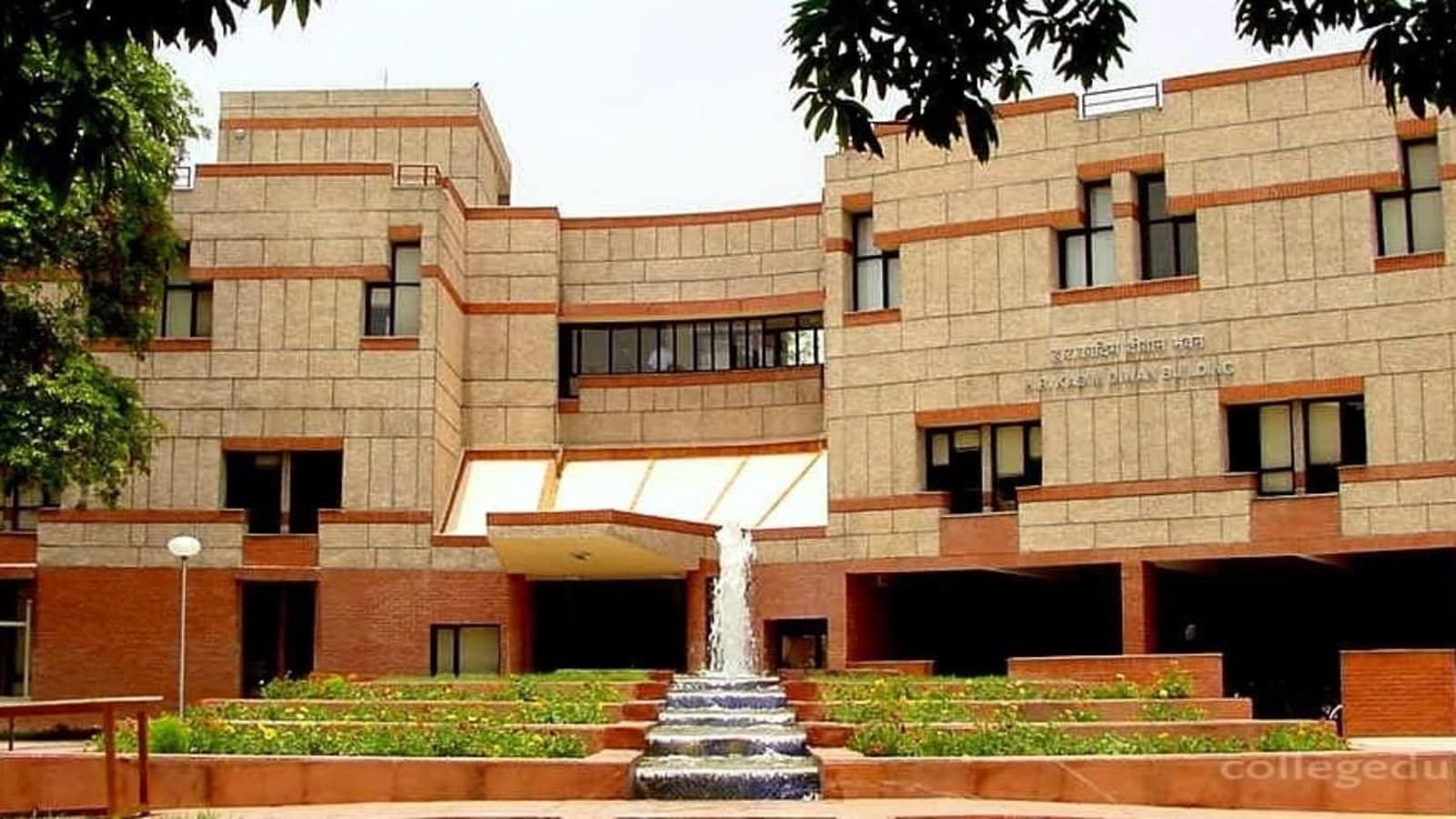 Prof. Sharma did his PhD at Indian Institute of Technology (IIT) Kanpur directly after his B.Tech
Prof. Sharma did his PhD at Indian Institute of Technology (IIT) Kanpur directly after his B.Tech
SS: Really ?
CSS: Yeah, so, I mean, I got the faculty position offer in May 2010, while I submitted my PhD thesis in October 2010. And in December finally, I joined the institute and I defended my PhD after four months. So, I defended my PhD thesis after 2011, but I started guiding a PhD student from January 2011. So, that is how it was. (laughs !)
And yeah, I think it is a long journey now. I mean, it has been almost 14 years in IIT Hyderabad and now I am currently a professor there for the last two years. So, that is my professional journey. I joined the Indian Young Academy of Sciences(INYAS) as a member in 2017. This was the third batch because when the INYAS, was founded in 2014 and first batch of membership was in 2016 and then 79 joined. And later I became the chair of Indian Young Academy of Sciences from 2020 to 2022. Then I also became a member of Global Young Academy in 2020 and that is where I currently represent Global Young Academy as its co-chair. And this is only the second time that India has been honored with the co-chair, our founding chair of INYAS Dr. Anindita Bhadra being the first one. She was also the first co-chair from India for the GYA and I am the second co-chair now for the Global Young Academy for 2024 to 2025.
Meanwhile, after becoming professor at IIT Hyderabad in 2022, I was then assigned the responsibility of a Dean of Research and Development, which I just completed in my two years tenure. So, I think that is my scientific and professional and leadership journey so far.
SS: So, from a student like me who is going for a PhD, we always think if we have to find food in academia, research academia, it is a long journey. People tell us, if I have been frank, it is a long journey. So, from there, standing out as a rare example before us; how did it happen and how does it feel?
CSS: I consider myself lucky because, between 2008 and 2010, many new institutions were being established. In particular, the eight new IITs (Indian Institutes of Technology) started in 2008, and each of them was aggressively seeking to expand and recruit qualified faculty members. During this time, I was about to complete my PhD, so I decided to apply. To be honest, I thought, ‘Let me apply and see what happens.’ Generally, in India, by the time you apply, get shortlisted, and are called for an interview, it takes almost a year.
Assuming that it would take a while for the interview call to come, hopefully after I submitted my thesis, I decided to apply. However, things moved much faster than I expected. Within three months of submitting my application, I received the interview call. I was interviewed in March, and by May 1st, I was offered a faculty position. Of course, it was a conditional offer, subject to the completion of my PhD. But I think that’s how things turned up, favorably. I believe I made the right decision to join immediately after my PhD. The experience I gained in those initial years, setting up my lab and building my team, was just as valuable as any postdoctoral experience could have been.
SS: My next question would be if you look back as an IIT student and today as an IIT teacher, what similarities and differences are defined because you are from an IIT which needs no introduction, the IIT comfort. But frankly speaking, you are now in IIT which is much newer compared to even 50 years, not even 25 years. So, I mean what legacy IITs have for the previous seven IITs. So, I mean what differences and similarities do you find and then from the fun point, from the bench to the chair, How do you just change direction?
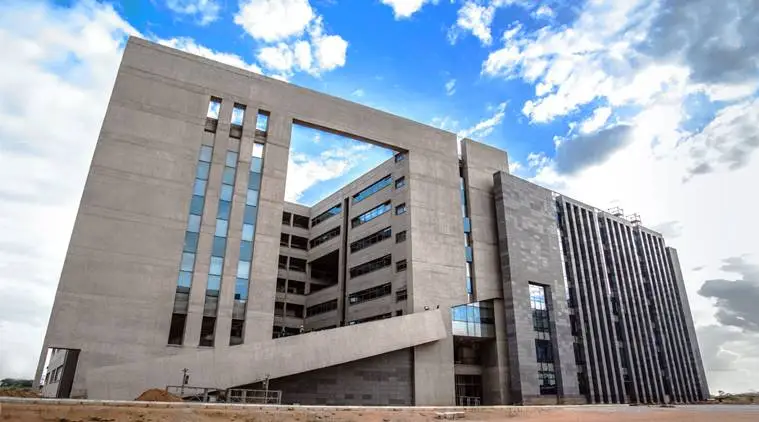 Prof. Sharma joined as a faculty at Indian Institute of Technology (IIT) Hyderabad in the department of Chemical Engineering even before formally submitting his PhD thesis
Prof. Sharma joined as a faculty at Indian Institute of Technology (IIT) Hyderabad in the department of Chemical Engineering even before formally submitting his PhD thesis
CSS: I think it’s an interesting question because I was a PhD student at IIT Kanpur and then joined a new IIT that was still in the process of being established at the time. So, yes, there are a lot of differences, as well as similarities, and I would consider both aspects.
Of course, when you come from an established IIT like IIT Bombay, you have certain advantages: the reputation of the institute, the guidance from well-established professors, and the legacy that the institute creates. These advantages are definitely there when you come from older IITs.
However, when I reflect on my journey at IIT Hyderabad over the past 14 years, where I’ve graduated 17 PhD students—many of whom are now faculty in various IITs—I see both sides. While my students, as graduates of a new IIT, did not have the legacy or institutional reputation, they gained something equally valuable. If they worked on challenging problems, published quality papers, and most importantly, had access to the R&D infrastructure that these new institutes provide, they were at an advantage in certain ways.
For instance, at IIT Hyderabad, we have state-of-the-art research facilities, which in some cases, may even surpass those of older IITs. This infrastructure provides a significant edge, so if students are working on the right problems and publishing quality research, they can compensate for the disadvantage of institutional legacy.
I believe one should focus on the positive aspects rather than worrying about what can’t be changed. Yes, IIT Hyderabad is 16 years old now, but that’s something beyond our control. What we can control is how we leverage the best facilities, the new campus, and the positive research environment to do better science and better research, so we can be just as competitive as graduates from any other IIT.
SS: These days, we often discuss interdisciplinary work, especially in fields like basic sciences or, in my case, applied sciences. I had the opportunity to do an internship at IIT Roorkee, and I also spent a few days at IIT Kanpur and one day at IIT Delhi. When you look at the older IITs, they have many departments, schools, and research centers, and each of them often works independently, as they should. But the challenge is that, with the sheer number and diversity of these units, it can sometimes become difficult to achieve a truly holistic approach. In contrast, for newer IITs like IIT Hyderabad, if someone unfamiliar with the institute looks at its website, they may notice that the number of faculties, centers, and departments is relatively smaller. The facilities might seem fewer compared to the older, more established IITs. In light of this, what is your opinion on this situation? How do you think the newer IITs manage to stay competitive and successful despite these differences?
CSS: From my own experience at IIT Hyderabad, I can confidently say that being a new institution, we definitely have certain advantages. For example, at IIT Hyderabad, we’ve introduced several innovations in both academics and research. Let me share a few examples.
In academics, we don’t follow the regular semester system. Instead, we’ve divided the semester into three segments, and most of our courses are not semester-long. We call this approach fractal academics. The idea behind it is to introduce emerging areas of study to students, especially in the B.Tech program, without the limitations of traditional credit systems. For instance, we break down certain courses into smaller modules, which allows us to free up credits for more advanced courses.
In the traditional system, there are core courses like electrical engineering or computer science, which might not be as relevant today. We minimized these courses and introduced more new, interdisciplinary ones. Additionally, we give students the flexibility to dive deeper into subjects of their interest, something not typically possible under conventional semester systems.
This approach helped us revamp our curriculum, addressing new challenges while providing students with greater flexibility in choosing their courses based on their interests.
We’ve also introduced several new initiatives focused on interdisciplinary research. For example, in our PhD program, we have an interdisciplinary track where two faculty members from different departments collaborate on a project. The students join a center for interdisciplinary programs and work under the joint supervision of two professors. These students are not bound to any specific department, which promotes more collaboration across disciplines. This model is different from the traditional co-supervision approach, where one professor is primarily responsible. Both faculty members are equally responsible for guiding the student.
Such initiatives would have been challenging to implement in older IITs due to their more rigid systems. Being a new institution without legacy constraints has allowed us to experiment with innovative ideas in both academics and research.
SS: Sir, you are saying that the IIT Hyderabad design is meant mainly for the manufacturing industry. So, should we term that as core subject or non-core?
CSS: It’s a B.Tech program, a complete B.Tech program in Computer Engineering.
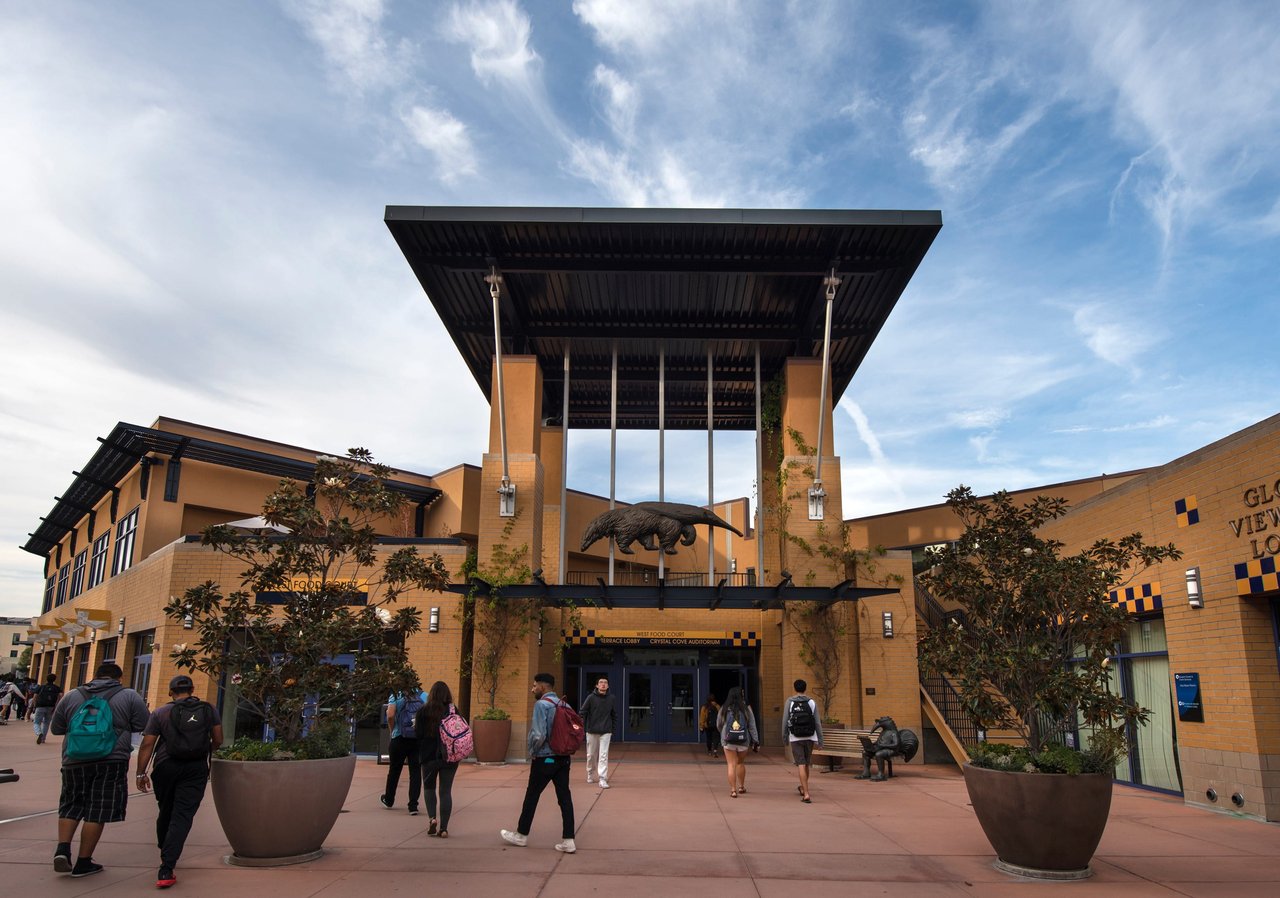 Prof. Sharma was a visiting research scholar at the UC Irvine
Prof. Sharma was a visiting research scholar at the UC Irvine
SS: When I was about to join an institute, we were giving JEE Mains, JEE Advanced, and NEET exams. During that time, we were asked mainly which subjects we were interested in. Given the variety of subjects, the first screening often came down to whether the subject was considered ‘core’ or ‘non-core.’ To me, core subjects meant electrical, mechanical, and civil engineering, while the rest were seen as non-core. Some people believed core subjects would always have a lot of job opportunities because they’re foundational, while others argued that those are outdated, relics of the past. In today’s world, people often say that yesterday belonged to Electrical Engineering and today belongs to fields like Quantum Computing and Artificial Intelligence. Considering this shift, IIT Hyderabad is introducing a program aimed at the manufacturing industry and is ranked third in innovation. This challenges the traditional view that everything is shifting to electronics or online industries. From that perspective, how do you see the future of core vs. non-core subjects? Do you think the boundaries between them are becoming more blurred, or is there still a clear distinction?
CSS: I think saying that everything will be online or AI-based is not entirely accurate. In my opinion, there are core areas like the manufacturing industry that cannot be overlooked. The Government of India’s vision to make India a ‘Viksit Bharat’ by 2047 is built around this idea. If we look at any developed country—like the US, Germany, or Japan—they all have strong manufacturing industries at their core. No country can truly develop without focusing on this sector.
With all due respect to the IT sector, we cannot become a superpower or a developed nation just because of it. The manufacturing industry needs to grow. Initiatives like ‘Make in India,’ ‘Digital India,’ and others are focused on this very sector. For example, the government has already launched the Semiconductor Mission, with plans to manufacture semiconductor chips in India within the next few years. But here’s the question: where do we have the skilled manpower for this?
This brings me to IIT Hyderabad’s perspective. Two years ago, we started a B.Tech program in IC Design and Manufacturing. We’re the only IIT to have introduced this program, with a view to meeting the future demands of the semiconductor industry. I’m happy to share that the All India Council for Technical Education (AICTE) has recognized our initiative and adopted our curriculum for this program. As a result, last year, over 100 engineering colleges across India began offering similar B.Tech programs.
So, if we aim to develop the semiconductor manufacturing industry, we need to prepare our engineers accordingly. Right now, we lack skilled professionals in this domain. This is why we introduced this specialized B.Tech program in semiconductors.
SS: Now the question comes that the manufacturing industry needs experts that the UG course is making. Now the fact is that, if we come out of academics, India is a country whose borders are very fine with very good neighbors (smiling!!). So we have to spend a good amount on defense. India is a country which has a huge number of stomachs to fill. So we need agriculture and then agriculture based industries. India is a country to feed, we have to export. So there has to be stuff that has to be exported. Now, are those students capable enough to go to any industry that requires them or still they are tailored for some specific?
CSS: When we talk about this B.Tech program in computational engineering or the manufacturing industry, it’s not limited to a specific sector. It can cater to multiple sectors like defense, healthcare, and agriculture, which are crucial today. With the rise of AI, it’s important to understand that AI is a tool, but it needs to be applied with subject knowledge. For instance, to apply AI in healthcare, you must have a background in healthcare, or in agriculture, a basic understanding of agriculture is essential.
B.Tech programs in computer science provide knowledge in software, hardware, and programming, but they often lack the depth in core subjects. This program, which combines core subject knowledge with computational and AI tools, offers a much stronger foundation for future jobs, especially in the manufacturing industry.
At IIT Hyderabad, we recognized the importance of AI early on. We were the first institute in India to introduce a B.Tech in AI and, globally, we were the third after Carnegie Mellon and Stanford. Our vision is broader, and that’s why, alongside the B.Tech in semiconductors and computational engineering, we also introduced the B.Tech program in AI.
SS: My next question may not come across positively, but given the global scenario and specifically the current situation in India, we’ve been hearing that IIT Bombay is considered the most coveted institute, followed by IIT Kanpur, IIT Kharagpur, and IIT Delhi. In recent years, it’s been observed that about 70-80% of students are getting selected for IIT Bombay, while the rest are not, which seems very concerning. This situation feels unacceptable in our society. While it’s understood that not everything can be 100% distributed, the fact that IITs have always been seen as paragons of excellence, and are now seeming to fall short, raises a question. Do you think this decline is due to the changing global landscape, or is it that the brightest minds are no longer choosing to stay in India? Or, is it that IITs themselves are not producing the best anymore? How do you interpret this situation? It’s not something that’s viewed positively, whether at the government level, among students, peers, or industry.
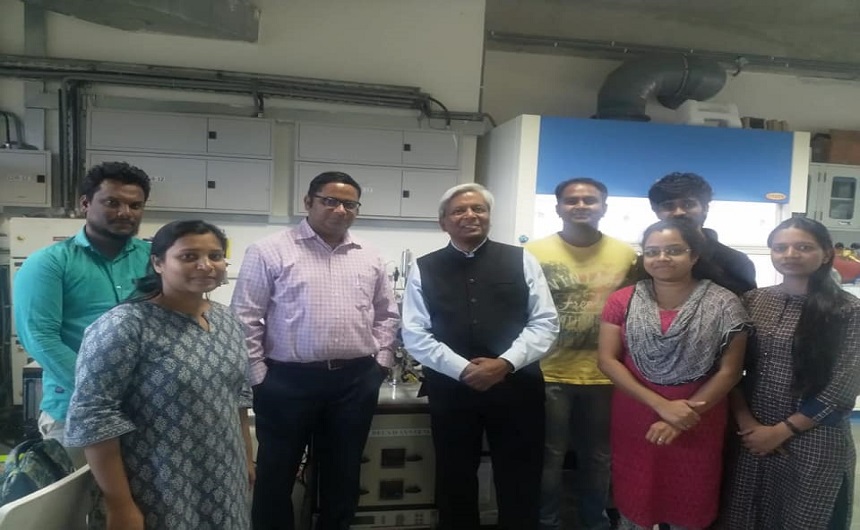 Prof. Chandra Shekhar Sharma’s Carbon Laboratory, IIT Hyderabad
Prof. Chandra Shekhar Sharma’s Carbon Laboratory, IIT Hyderabad
CSS: See, I think we need to look at this scenario from a broader perspective. When we talk about placements, the 70-80% you mentioned doesn’t mean that the remaining 20% aren’t doing anything. Over the past 5 to 10 years, there has been a significant rise in startups, many of which are led by our youth, including B.Tech students. At IIT Hyderabad, for example, there are students in their second or third years running their own startups and even employing others. This highlights that not all students who don’t get placed in traditional jobs are without opportunities.
The landscape has shifted. Many students are now pursuing entrepreneurship, higher studies, or unique career paths that don’t always fit the traditional placement model. While the number of students opting for higher studies has reduced over the years, it’s a positive shift, especially after addressing the brain drain concerns. The focus is no longer just on finding a job after B.Tech or pursuing higher studies.
Even for those completing a Ph.D., the mindset has evolved. It’s no longer just about joining academia; there are opportunities in R&D, science administration, science communication, and science journalism, which are becoming more attractive career paths.
So, if we look at this from a broader perspective, I believe no IIT graduate is without a career path. The options are more diverse than ever before.
SS: So you have been in academic administration. The fact is that being a professor just with his students and lab and being in the administration, how do the two chairs differ?
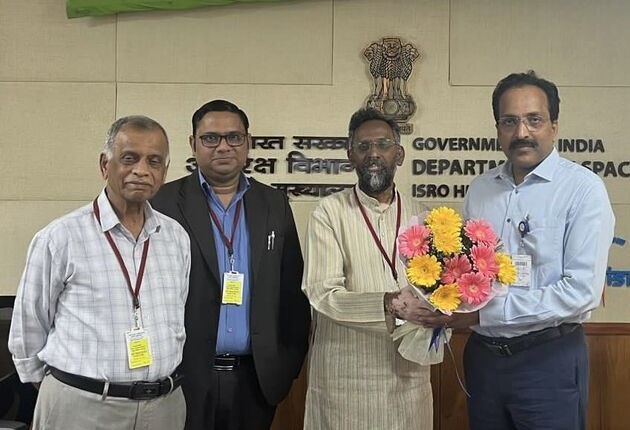 Meeting with ISRO chairman Dr. Somanath to strengthen the research cooperation between IIT Hyderabad & ISRO, with Prof. Chandra Shekhar Sharma
Meeting with ISRO chairman Dr. Somanath to strengthen the research cooperation between IIT Hyderabad & ISRO, with Prof. Chandra Shekhar Sharma
CSS: I believe there’s a difference of opinion regarding the timing of transitioning into science administration. Some say one should focus on research early on and move to administration later in their career. However, my perspective is different. Through my experience with INYAS, I’ve realized that young scientists often face challenges that are best understood and handled by their peers. If you identify issues that you feel strongly about, I believe you should step into administration, rather than blame the system or the seniors. By doing so, you can make a positive contribution and help bring about change.
When I became a professor, my director asked me to take on the role of Dean of R&D at IIT Hyderabad. At the time, we had over 2,000 projects, and this number has grown to nearly 4,000. Managing this growth came with significant challenges, especially given the changing policies and funding sources. For me, administration became a full-time job, but it didn’t negatively impact my research. In fact, I published more papers than I had in previous years, largely due to the 14 years I spent in the lab earlier in my career.
I had support from postdocs and senior PhD students, which helped balance both roles. I prioritized administration during weekdays but dedicated weekends and evenings to my research. My students were supportive, knowing the demands of my administration role, which I greatly appreciated.
Being involved in administration, especially as Chair of INYAS during the pandemic, gave me a broader perspective, which in turn made me a better researcher. Even as a researcher, you need leadership skills to manage diverse teams. My experience in administration helped me develop those skills. While you must prioritize one role over the other at times, I believe these two aspects—research and administration—are complementary, and being involved in both can make you a more well-rounded professional.
SS: And now, I will give you a small problem to solve. What you told me is two months, two and a half months long. Let’s imagine a scenario: A student from Central University of South Bihar gets an opportunity to work at IIT Hyderabad. He dedicates around two and a half months, working diligently on computational tasks and basic research, while also continuing his studies back at the university. By the end of August, he completes his work, and by December, a paper is fully ready for submission. By God’s grace, he gets the chance to present this paper at a conference in Germany. However, there’s a catch. The university, being less lucrative compared to IITs, might not have the funds to support his travel. Moreover, since he is an undergraduate, he is not eligible for SERB or similar research funding programs. Given that he is not an IIT student, how can he secure the money required to travel?
CSS: Yeah, I think you have a very valid point. And I totally support this, that we should have a more structured way of supporting those students.
And this number is not very big, but I think this is very important. So, I mean, thanks for bringing this point, highlighting this point. And I totally agree with that.
And well, right now, I am not in that. But yes, I think whenever I will get an opportunity to look into this matter from the institute point of view, or maybe at the national level, where I am part of some committees, I will definitely try to come up with some structured policy. Or maybe something like from the science academies, where we can have some kind of financial allotment for such students, undergraduate students to present their work, because you are right, that there are structured programs for the opportunities for the PhD students, but not for the undergraduate students.
So, but I agree, I mean, this has to be looked into. And it is more like a policy matter. But given the kind of discussions and given the kind of focus these days on undergraduate research, I am sure very soon we should be having this thing in place, at least at an institute level. So, that is what I can say right now.
SS: Can you please explain briefly what INYAS and GYA are?
CSS: See, INYAS, it stands for Indian National Young Academy of Sciences. It was established in 2014 by the senior academy, Indian National Science Academy, which is one of the oldest academies in the country. So, they came up with the idea in 2014 that young scientists should be having a separate exclusive platform where their voices can be heard, where they can also get some chances to network among the young scientists and also importantly contribute towards the science outreach, science promotion.
This is how this young academy was established in 2014 and I am here in Kolkata to celebrate it’s 10th year. In these 10 years, from 2014 to 2024, INYAS activities, if you see, I think we have done exceedingly well.
Coming to the Global Young Academy, this is also like another young academy, but it is having a global nature. It is connected with more than 100 countries and it is headquartered in Germany. It is supported by the German Academy of Sciences, Leopoldina, administratively and partially financially as well.
And as I said, Global Young Academy has representatives or membership from more than 100 countries. So, obviously, the perspective of the issues of young scientists in the Global Young Academy is much broader.
SS: As a professor or scientific administrator, do you think the problems I’ve presented can be controlled, partially addressed, or alleviated within the academic system? Specifically, if we focus on the “young” demographic, including undergraduate students (and even postgraduate students or PhDs), who often face challenges despite some funding opportunities—how can we address these issues? Is there a way to encapsulate or reform these community-based systems to better support them?
CSS: Especially when you look at the Indian National Academy of Sciences (INSA) during my tenure as chair from 2020 to 2022, my major focus was to expand the Academy’s activities in Yash to encompass a broader understanding of young scientists. We started this initiative in 2014, and at that time, the focus was primarily on school students. However, we gradually expanded the scope of our activities.
If you look at today’s situation, we have several flagship events that cater to different segments. We are focusing on school students, rural teachers, and training those teachers to further educate their students. We also have programs for PhD students, postdocs, and early career researchers—what we often refer to as “young scientists”. Additionally, we’ve introduced separate flagship events specifically for women scientists, covering various stages of their careers, from college to PhD to postdocs.
Over the past five to six years, we’ve significantly expanded our activities. As I’ve mentioned, there’s still a lot more to be done. I’m confident that in the coming years, we will continue to grow and become a strong voice for young scientists. When I say “young scientists”, I’m referring to everyone from school students to independent early career researchers.
With such a wide target audience, our initiatives have been impactful, but of course, there’s always room for improvement. These academies are dedicated to supporting young scientists, and yes, there is an age limit for participation, but we are continuously working to ensure inclusivity and broader representation.
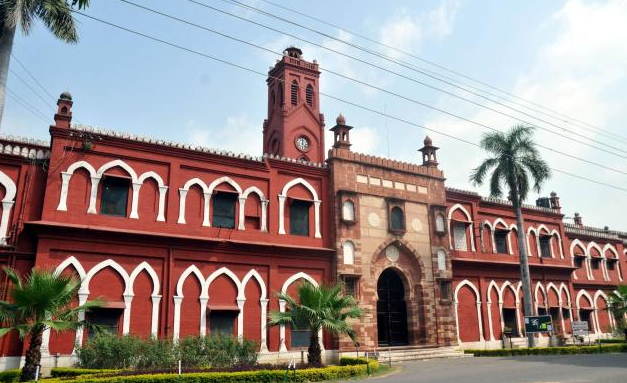 Prof. Sharma did his B.Tech in Chemical Engineering at Aligarh Muslim University (AMU)
Prof. Sharma did his B.Tech in Chemical Engineering at Aligarh Muslim University (AMU)
SS: Apart from these in the very basic nature or the mode of operation, how does the Indian Academy of Science, Indian National Science Academy and the third National Science Academy, the three in Delhi, Allahabad and Bangalore are different from INYAS ?
CSS: As I mentioned earlier, our mandate primarily focuses on young scientists, which, for us, includes everyone from school students to college students, to PhDs, postdocs, and early career researchers. In contrast, INSA (Indian National Science Academy) in Delhi has a mandate that is more centered on the international representation of Indian scientists on the global stage. We also have the National Academy of Sciences, which focuses primarily on science outreach, especially in schools. The Indian Academy of Sciences, on the other hand, operates more as a publication space.
When we look at these three academies, what was missing was a dedicated focus on young scientists. This is where INYAS came in and bridge that gap. When we started, we were advised by senior academies not to overlap with their programs, which was completely fine. I believe there was enough room and sector for us to work in, and we’ve been able to effectively address the needs of this space.
This is where INYAS stands out. When we talk about the fellowships from these other academies, they typically go to very senior scientists—50+ years old, I’d say. Of course, they bring invaluable experience and wisdom, but to execute visions and turn them into reality, you need energy, you need enthusiasm. And that’s where young scientists come in. This is the distinct difference that INYAS brings compared to the other academies.
SS: Okay. So, I will come out of the jargon and basic question, why did you become a scientist? You could have become something else.
CSS: Yes, you’re right. If I look back, I can say that throughout my life, I always had an inclination toward academics. By academics, I mean being a scientist or a professor. That’s what I wanted to pursue. I had a deep interest in chemistry during my +2, as many students do, and like most of them, I thought that chemistry and chemical engineering were quite similar fields. But, as I later learned, that’s not quite true!
When I was doing my +2 at Aligarh Muslim University (AMU), I would pass by the chemical engineering department, and it was like a dream to study in that department. That’s when I decided to pursue chemical engineering at the B.Tech level in AMU. At the time, my parents weren’t very supportive, as chemical engineering wasn’t considered as prestigious as mechanical or electrical engineering. I had the option to switch to mechanical or electrical, but I decided to stick with chemical engineering, and I think it was the best decision I made. When you make your own decisions, you put in extra effort to make them work.
It was during my time in chemical engineering that I found my true interest in academics. After completing my B.Tech, I was clear that I wanted to pursue a PhD, so I didn’t go for a master’s. When I got the opportunity to work at the CSIR lab in the National Metallurgical Laboratory (NML), I thought it would be great exposure to research, which would complement my PhD aspirations.
Once I was in the PhD program, I was still focused on academia. However, I never imagined at that time that I would be joining the academic staff at an IIT. By the time I was 30 or 40, I started looking into post-PhD opportunities. Working at IITs showed me that academics and research are deeply interconnected. Although my primary interest was always in teaching, I developed a strong interest in research as well. I believe IITs are the best place where one can balance both academic teaching and research. I got the opportunity to do this for three years, and it was a very fulfilling experience.
SS: You mentioned that your goal was always to pursue academics. However, in India, a long-term career in academics is often not considered very lucrative. What made you choose it? What were the consequences of that choice for you?
CSS: Yes, absolutely. You’re right. When I completed my B.Tech and shared that I wanted to pursue a PhD, my family wasn’t very supportive, to be honest. Especially, as you mentioned, coming from UP, the typical expectation after completing BTech was to get a job. And that’s what most of my BTech friends did. I graduated in 2003, and it was the time when the IT sector was booming. Companies like Infosys would come to campus for mass recruitment drives. It was the perfect time to secure a job, but I never attended any placement sessions in my life.
Looking back, one thing that truly shaped my career is that I started making my own decisions about my future right after 10th grade. I was very clear about my path. After 10th, I was in the state board, and then I joined Aligarh Muslim University. There, I had to choose between mathematics and biology. I was sure I wanted to go for mathematics because I had a strong interest in it.
In +2, my inclination towards chemistry became even stronger, and that’s why I decided to pursue chemical engineering. While my parents weren’t supportive of chemical engineering—mainly because it wasn’t as well recognized for job prospects—I stood firm in my decision. Again, I took ownership of my choice and committed to it, despite the challenges. Similarly, when I decided to pursue a PhD, my parents weren’t in favor of it either. Yes, there was resistance, but I knew I could handle it because I was confident in my decision. Clarity of thought, especially at an early stage, is crucial. It’s something that’s been incredibly helpful to me in my career.
SS: And you had the occasion of being a teacher, at least getting appointed before you got the PhD degree in hand. So, that was some kind of answer to anyone who is questioning you.
CSS: Well, I wouldn’t say it was wrong, because when I look at it from a family perspective, I can now relate as a father of three daughters myself. Parents are always looking for the safest and least risky path for their children. In that sense, they are right from their perspective, just as I was right from mine. It’s a matter of how you convince them, and before you can do that, you need to convince yourself first.
That’s where clarity of thought and self-confidence become crucial. If you’re not clear about your decision, you won’t be able to convince others. I was able to convince my family, though it took time. Eventually, they were fine with it, but yes, there was initial backlash.
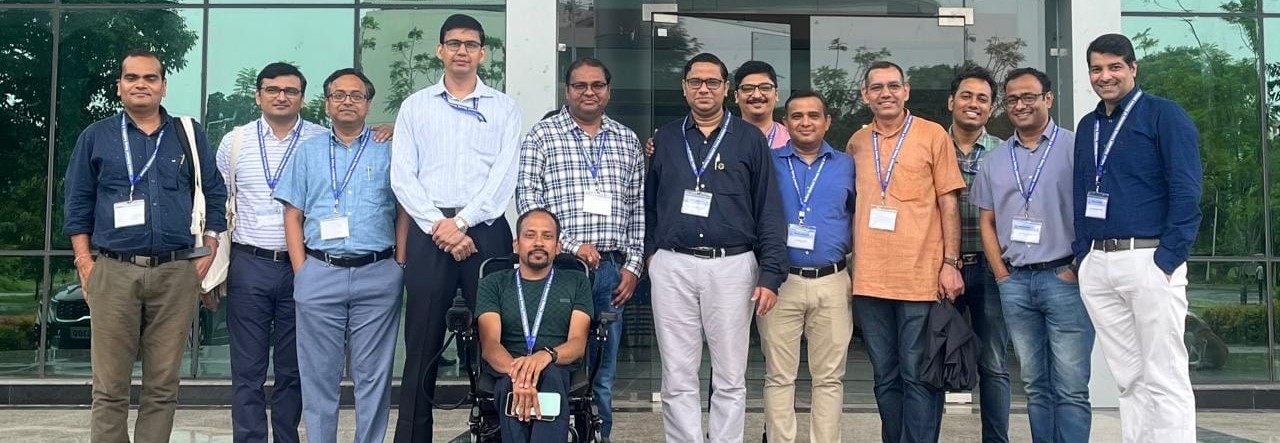 Post-INYAS’s Mid Year Meeting (MYM-2024) at IISER Kolkata
Post-INYAS’s Mid Year Meeting (MYM-2024) at IISER Kolkata
SS: Okay, so, last question, any final comments for the students and readers?
CSS: See, based on my own experience, my own journey, I must say that two things, one is follow your dreams, follow your passion. And secondly, have the clarity of thoughts in mind as early as possible because if you are confused, you will not be able to give your 100%. So, and to bring that clarity, you have to be aware of your surroundings. Like what is going on? What are the career options?
And these days, there are so many non-conventional career options that are emerging. And if you follow your passion, if you follow your dreams in that line, I think you will do much better. So, I think the first thing is to have clarity. Second, once you have clarity, follow it, follow your passion, follow your dreams. At a certain point of time, you may have to go against your peers, your parents, so be it. I am sure that if you follow and you are successful in that, I am sure of the chances and obviously the parents and others will also be in line with that. So, that is what I would say.
SS: Thank you, sir. It was nice talking to you.
CSS: Thank you.